How to create a successful startup? Surely there is a method

Manual cloud by Michael Casker .
Runa Capital announces an investment in ThinkGrid , the global market leader in cloud computing platforms. ThinkGrid specializes in providing cloud resources for all possible purposes. One of the company's main services is virtual desktops on windows7 for business, which is planning to upgrade their workstations with windows xp.
You no longer need to update the hardware and software, just subscribe and get your remote workplace accessible from any device. And the flexibility of customization can provide both total control of the administrator, and complete freedom for users. Practice shows that switching to remote services reduces costs by an order of magnitude, but now the business is only looking at projects such as ThinkGrid, especially when it comes to completely moving to the cloud.
')
But ThinkGrid is not an ordinary cloud. This is hosting for hosters. Platform for other clouds, on the basis of which partners of the company can create their own cloud service and easily scale it - from VoIP telephony to SaaS service - quickly, cheaply, without costs. Moreover, the end user most likely will not even know that he uses the ThinkGrid cloud. For example, Runa Capital has long used VoIP telephony from a small supplier who, as it turned out, used the ThinkGrid platform for its service.

Pretty bold for 2011 - to fully translate work on cloud technologies. But we are sure that tomorrow is behind cloud technologies and we are investing in them today. It may seem strange that Runa Capital’s portfolio contains more and more cloud projects, but this is only a consequence of our scientific approach to the selection of candidates.
Can science tell us which project will not outlive its competitors, and which one will prove to be a technological breakthrough? Of course. Moreover, it turns out that there is no clear boundary between scientific and commercial projects - they are all created on the same principle.
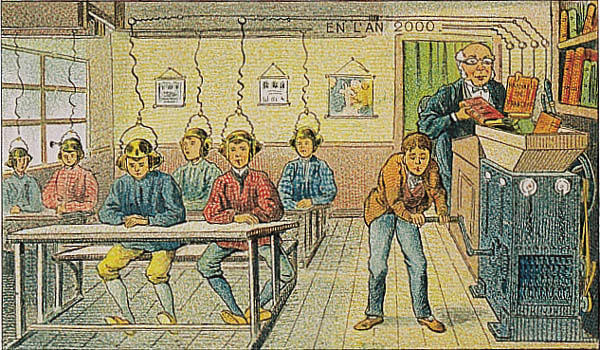
View of cloud technologies from 1910.
How to make a good startup? Observe your daily activities and figure out how to simplify and automate them. This is how almost all successful startups came from google to wikipedia.
But, you see, it is impossible to come up with something really new and original in this way, so it will be useful to remember how science is moved forward. It is curious that all major discoveries occur despite the established picture of the world. As soon as scientists began to exult, Newtonian mechanics was perfected and fully describes the world, when suddenly in 1911 Rutherford established the planetary structure of the atom and opened the doors to the atomic world, which has nothing to do with the laws of physics that are familiar to us.
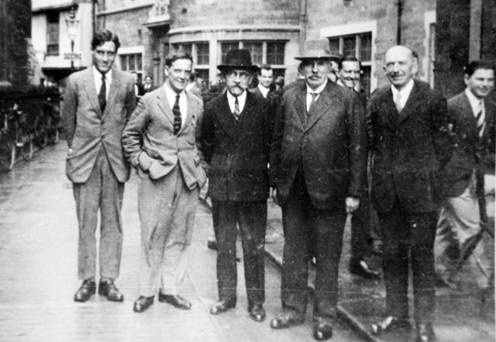
Kapitsa (second from left) and Rutherford (second from right) with colleagues in Cambridge.
Or another example. For a long time, scientists were confident that at temperatures close to zero, electrons in metals freeze and lose their ability to conduct current. But as soon as it was decided to test this experiment in 1911, it turned out that the world here was arranged with accuracy to the contrary - at zero temperature, many materials go into a state of superconductivity.
Until 1919, it was believed that the universe was stable and practically immobile. In any case, she looked through telescopes. However, the ambitious project of the giant Hooker Telescope in California changed everything. His mirror with a diameter of 2.5 meters gave an image of such high resolution that Edwin Hubble managed not only to expand the boundaries of the visible universe, but also to discover for the first time other galaxies consisting of an enormous number of stars. After ten years of peering into the starry sky, he made an even more important discovery - all stars and galaxies are subject to red shift, which irrefutably indicates that they move with increasing acceleration. The color of all space objects is shifted to red, because the whole universe is rapidly expanding in all directions. It was so contrary to the scientific picture of the world that Albert Einstein had to rewrite his theory of relativity.
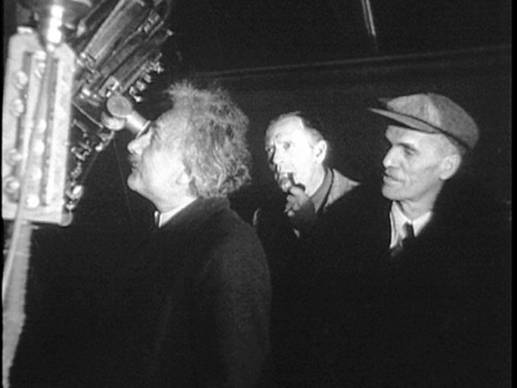
Einstein, Hubble, and Walter Adams at the Mount Wilson Observatory, California, 1930.
What do these three examples have in common? In each of them, researchers went beyond the limits of the known world. Their discoveries were made possible by new tools, which allowed to look further than anyone. By the way, often due to such transcendence, scientists cannot appreciate the potential of their discoveries. Heinrich Hertz was literally killed in his time, that no one ever made a more useless discovery than his radio waves - they certainly will not find application in the coming twentieth century:
“It is absolutely useless. This is only an experiment that proves that Maestro Maxwell was right. We only have mysterious electromagnetic waves that we cannot see with the eye, but they exist. ” “And what's next?” One of the students asked him. Hertz shrugged: "I guess nothing."
We were all very fortunate that then in 1888 the leadership of Hertz from the University of Karlsruhe estimated the discovery somewhat more promising and took up a detailed study of radio.
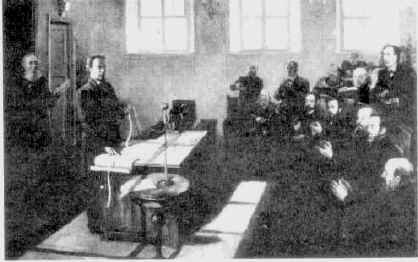
Alexander Popov demonstrates reception of the first-ever radiogram “Heinrich Hertz”, St. Petersburg, 1896.
Can the scientific method be applied to Internet projects? Of course, everyone just works that way. After all, going beyond the limits of existing projects on the Internet is much easier than in atomic physics. I will give an example from the history of Runet.
At the beginning of zero, the runet was a small, but rather populated place. At that time there were few opportunities for communication, and all those who grew out of chat rooms and forums created their own home pages. Naturally, their owners communicated with each other, constantly reading each other’s websites. But the communication between the owners of the pages was a rare particular - the site always had a guest book in which it was possible to leave a message. But in general, such “proto-commentaries” went as jokes. Yes, and the very creation of the site was a difficult task, they were only for serious engineers.
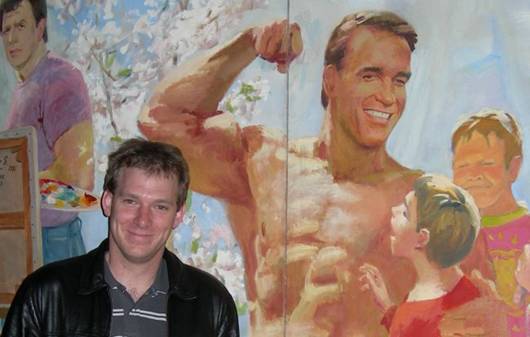
Fitzpatrick in Moscow, 2006.
That all changed in 1999, when Brad Fitzpatrick decided to improve his diary, adding to it the ability to leave comments and add other users to the friends feed. On this momentous day, he placed an inconspicuous particular at the center of his project and turned the Internet over. Another coup occurred already inside the livejournal - while sitting in LiveJournal, Zuckerberg came up with his Facebook. Although initially the idea of social networks was perceived by society as something of little practical and strange.
Today, the idea of ThinkGrid with a complete transition to cloud technologies or a virtual desktop instead of another hardware and software upgrade on an office computer may also seem strange. But it will take five years, and it will become widespread practice, as over the past five years it has become the norm to have an account in social networks. With the only difference that we have already switched to cloud computing, without even noticing it.
According to the International Data Corporation ( IDC ), cloud computing is won back from traditional systems at 20% of the market per year. If in 2009 the clouds occupied 36%, then in 2010 there were already 51%. According to the forecast, by 2012 the cloud computing industry will grow threefold and amount to $ 42 billion. The future is in the clouds.

Welcome to the XXI century.
Source: https://habr.com/ru/post/131325/
All Articles